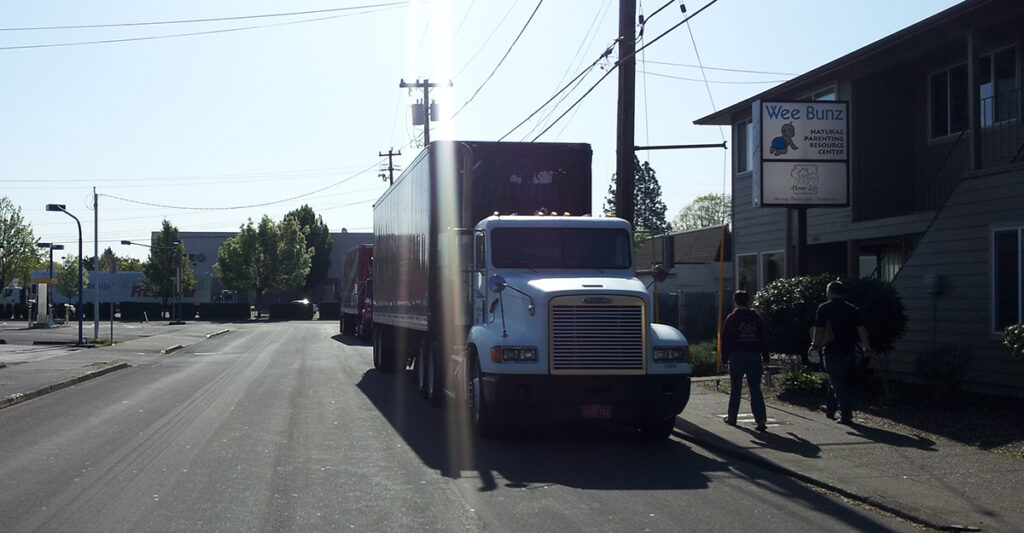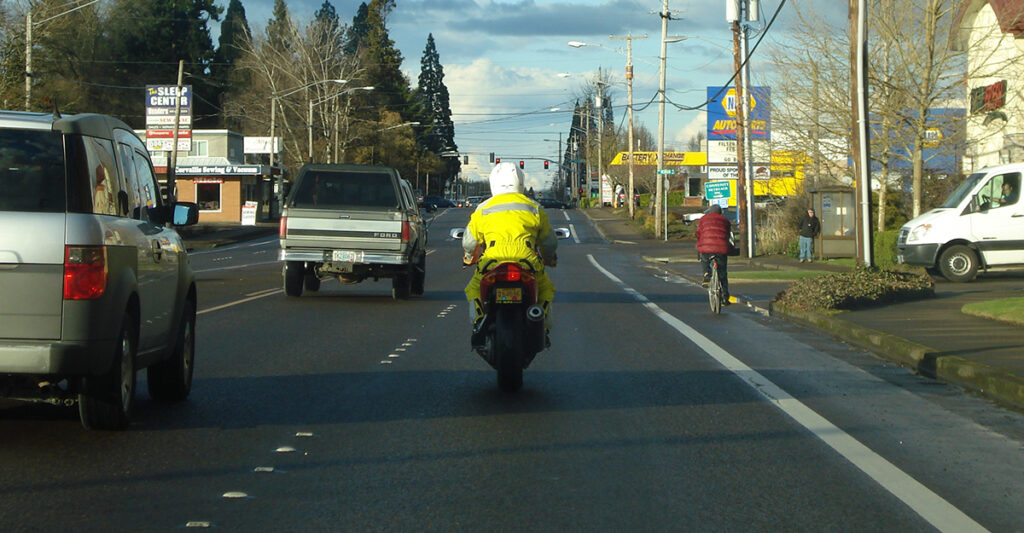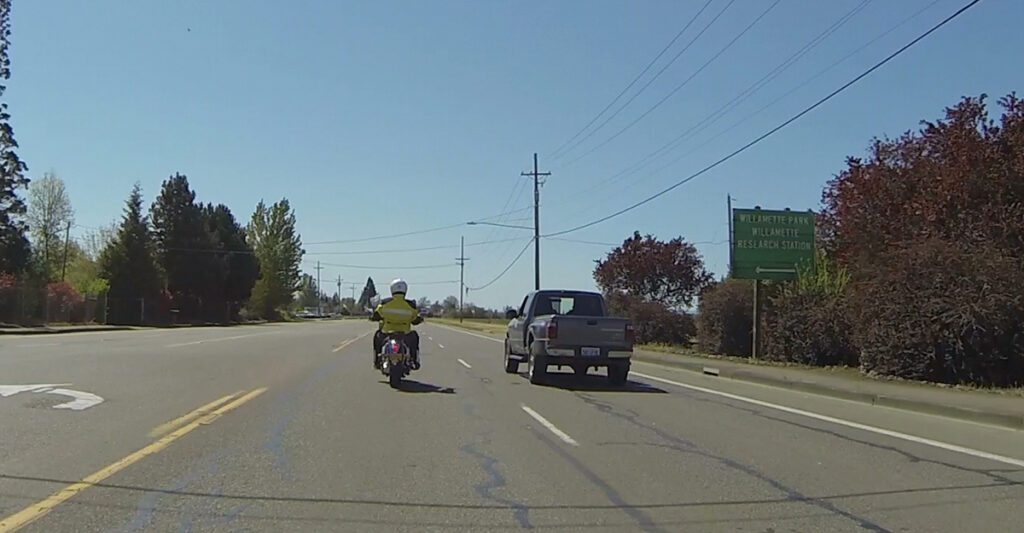The Problem
There are two types of “blind spots” in which other drivers can cause trouble for riders. One is the traditional, look-over-your-shoulder blind spot. Here’s where we get merged into, run off the road or sideswiped. The other type of blind spot is more common, but more sneaky: Large objects that block the view of potential hazards .

The Problem Behavior
While we can’t eliminate blind spots, we can change our behavior. The mistake riders make here is in awareness and attention. Blind spots are everywhere, but they don’t jump up and down, waving their arms, hoping you notice them. Instead, they prefer to sneak up and surprise you. If you’re not actively looking for blind spots, you may not realize they’re there until too late.

Act, Don’t React
Be vigilant. Never, ever ride in another driver’s blind spot. If you do … well, that’s just asking for it. And beware of other drivers creeping up into your blind spot. Immediately adjust your speed and position to avoid the situation altogether.
For blind spots caused by large objects, it’s your job to find them before they find you. Any time your view is obstructed by another vehicle or roadside building, sign, or foliage, go to high alert. Adjust position to see around the obstruction sooner. Slow, and approach “on the decel,” with your brakes covered, prepared to stop.

The Strategy
Accept that blind spots are everywhere and commit to finding them first. On any multi-lane road, assume every driver traveling behind you will find your blind spot … and every driver ahead of you will lure you into theirs. DON’T FALL FOR IT. Use frequent head checks for 360-degree awareness, and adjust your position constantly and avoid getting suckered.
For blocked views, assume there’s at one at every corner. Any large object – moving or stationary – should be suspect. Treat a blind spot like you would an intersection with someone waiting to turn who can’t see you.
Never accelerate toward a blocked view. Always approach on the decel. Position yourself for max visibility, approach with caution, and be ready to stop. If you’re not sure of your stopping ability, training is there to help. Team Oregon offers a $79 braking clinic for endorsed riders to up their game.